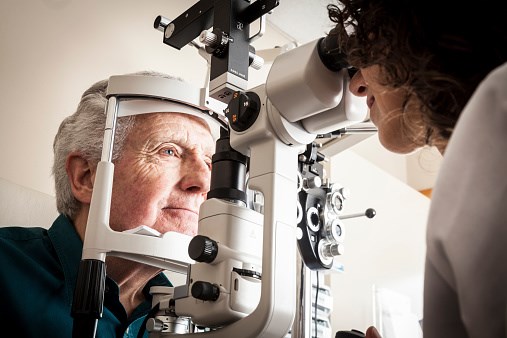A decision by the Ontario Association of Optometrists (OAO) to stop seeing OHIP-insured patents — and a stalemate in terms of negotiation — has created a big divide between its more than 2,000 optometrists and the provincial government.
According to the OAO website, the organization is concerned about the integrity of the province’s eye-care system and has made two requests: a formal negotiation process with a dispute resolution mechanism and a commitment to an outcome that no longer requires optometrists to subsidize OHIP services.
The OAO states that based on an independent, third-party accounting firm, the average operating costs to perform an eye exam in Ontario for 2019 — not including doctor compensation — was $75.51. The government has offered an increase of 8.49 per cent —from $44.65 to $48.43 — which the association noted still requires the average optometrists to pay the remaining $27 out of their own pocket in order to cover an OHIP-insured patient.
Alexandra Hilkene, spokesperson for Minister of Health and Deputy Premier Christine Elliott, told BarrieToday that while the current Progressive Conservative government understands the OAO, which has gone without an agreement since 2011, has been treated unfairly by previous governments.
“There is a need to change the way optometrists are compensated in Ontario. However, no credible evidence has been provided to substantiate how the OAO’s overhead costs were calculated, especially as optometrists’ overall income includes non-OHIP insured goods and services,” Hilkene said. “It would not be reasonable or responsible of the government to agree to any other fee increase without due diligence, yet the OAO is choosing to demand an outcome before allowing detailed discussions to start.”
Hilkene says that’s why the province is asking the OAO to return to the table so the two sides can review together, with the support of a third-party mediator, the impact of optometry overhead costs and future fee increases.
“As we wait for the OAO to agree to return to the table, we are providing $39 million to Ontario’s approximately 2,500 optometrists," she said. "This represents a starting point of our discussions, not the end, and is intended to be a good-faith gesture that will demonstrate our government’s commitment to reaching a fair and long-term agreement.”
This payment, according to the OAO, averages to just over $1 for each optometry service performed in the retroactive period, which OAO president Dr. Sheldon Salaba says makes Ontario seniors and children receive the lowest funding rates for publicly insured services across the country. Ontario optometrists officially withdrew OHIP-related services Sept. 1, 2021.
Patients, according to local optometrist Dr. Naghmeh Thomson, are unable to pay for care through their own insurance if OHIP doesn’t cover it all due to provincial legislation called the Commitment to Future Medicare Act, which prohibits optometrists from accepting private payment or third-party insurance in the case of publicly funded health care.
Hilkene noted any decision to withdraw optometry services was the decision of the OAO alone, adding the government will continue to fund OHIP optometry services and that funding “continues to increase year-over-year with utilization”.
“The bottom line is this… the OAO continues to decline the invitation from our independent, third-party mediator, who was chosen by the OAO, to resume negotiations. The Ministry of Health has agreed to these conditions and is ready and willing to continue discussions as soon as the OAO agrees,” she said. “The mediator gave an open invitation to both parties to resume negotiations, and the government continues to call on the OAO to agree to the mediator’s conditions return to the table.”
In an Oct. 18 statement, Salaba said the OAO accepted an invitation to mediation with the Ontario government in late August, adding after two days, they felt the ministry was not there to negotiate in good faith.
“While it is accurate the OAO did not accept the terms of the mediation, we stand confident in that decision as those terms would have prevented us from achieving our goal of a long-term solution. At no point did we anticipate the government to walk away after only one attempt at co-operation,” said Salaba. “We need reassurances that this time it is truly different.
"Our phone lines remain open and we patiently wait for the ministry to reach out and discuss a genuine path forward — one built on trust and constructive dialogues. The people of Ontario deserve no less," Salaba added.
Hilkene maintains the provincial government has yet to see credible evidence to substantiate how the organization's overhead costs were calculated.
“Insured optometry services vary considerably by province, including fees paid and other restrictions (such as) age, elements of service, etc. Many provinces don’t even fund optometrists at all. Others, such as Manitoba fund eye exams only every other year, while Ontario funds insured eye exams every year," she said.
Six other provinces/territories — including Saskatchewan, New Brunswick, Prince Edward Island, Newfoundland, Nunavut and Northwest Territories — don’t insure seniors eye exams, while New Brunswick, Prince Edward Island, Newfoundland, Nunavut and Northwest Territories do not insure children’s annual eye exams under their provincial insurance plan.
“Ontario is also the only province where patients don’t have to pay an additional amount out of their own pockets for an insured eye exam, in the same way they are not required to pay any extra fees for other OHIP insured services, like physician and hospital services," Hilkene said.



